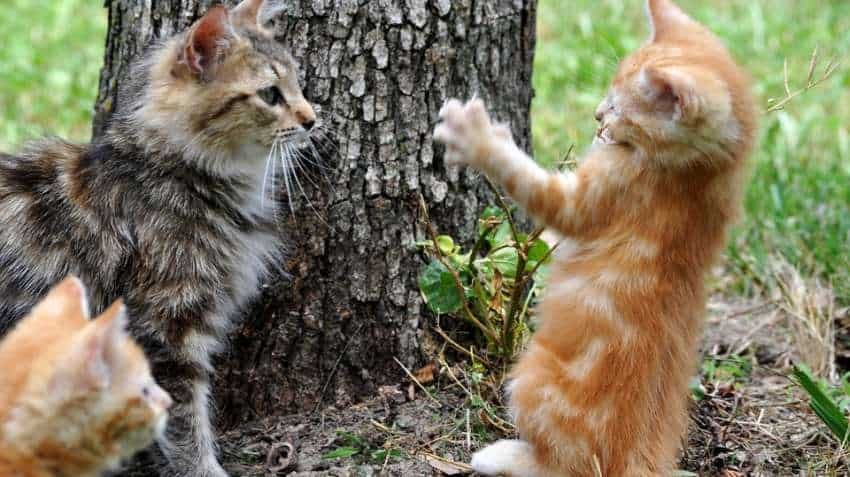Research on human-cat link on ancient Silk Road
Analyses of bone samples provides information about the cat`s diet. Compared to the dogs found during the excavation and to other cats from that time period, this tomcat`s diet was very high in protein. "It must have been fed by humans since the animal had lost almost all its teeth towards the end of its life."

In some news for cat lovers, new analyses done on an almost-complete cat skeleton found during an excavation along the former Silk Road in southern Kazakhstan indicates that common domestic cats, as we know them today, might have accompanied Kazakh pastoralists as pets more than 1,000 years ago.
An international research team led by Martin Luther University Halle-Wittenberg (MLU), Korkyt-Ata Kyzylorda State University in Kazakhstan, the University of Tubingen and the Higher School of Economics in Russia has reconstructed the cat`s life, revealing astonishing insights into the relationship between humans and pets at the time, the study said.
The tomcat - which was examined by a team led by Dr Ashleigh Haruda from the Central Natural Science Collections at MLU - did not have an easy life. "The cat suffered several broken bones during its lifetime," says Haruda. And yet, based on a very conservative estimate, the animal had most likely made it past its first year of life. For Haruda and her colleagues, this is a clear indication that people had taken care of this cat.
During a research stay in Kazakhstan, the scientist examined the findings of an excavation in Dzhankent, an early medieval settlement in the south of the country which had been mainly populated by the Oghuz, a pastoralist Turkic tribe. The settlement was located along the Silk Road, an ancient network of important caravan routes that connected Central and East Asia with the Mediterranean region by land. There she discovered a very well-preserved skeleton of a cat.
According to Haruda, this is quite rare because normally only individual bones of an animal are found during an excavation. After its death, the tomcat was apparently buried and therefore the entire skull including its lower jaw, parts of its upper body, legs and four vertebrae had been preserved.
Analyses of bone samples provides information about the cat`s diet. Compared to the dogs found during the excavation and to other cats from that time period, this tomcat`s diet was very high in protein. "It must have been fed by humans since the animal had lost almost all its teeth towards the end of its life."
Watch Zee Business live TV below:
DNA analyses also proved that the animal was indeed likely to be a domestic cat of the Felis catus L. species and not a closely related wild steppe cat. According to Haruda, it is remarkable that cats were already being kept as pets in this region around the 8th century AD.
Get Latest Business News, Stock Market Updates and Videos; Check your tax outgo through Income Tax Calculator and save money through our Personal Finance coverage. Check Business Breaking News Live on Zee Business Twitter and Facebook. Subscribe on YouTube.
RECOMMENDED STORIES
06:39 PM IST











 Himalayan Yak Food Animal Tag FSSAI Himalayan yak Scientific name benefits of yak milk
Himalayan Yak Food Animal Tag FSSAI Himalayan yak Scientific name benefits of yak milk Bird flu unlikely to spread majorly in India, says Hester Biosciences CEO & MD Rajiv Gandhi; sales of immunity vaccines to go up
Bird flu unlikely to spread majorly in India, says Hester Biosciences CEO & MD Rajiv Gandhi; sales of immunity vaccines to go up